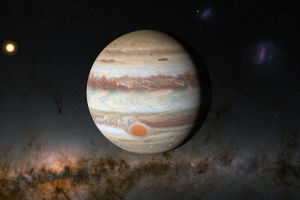The Milky Way, our cosmic neighborhood, is a place of wonder and intrigue. While it's home to billions of stars and countless planetary systems, its true nature is still largely unknown.
For centuries, we've gazed at this bright band of light stretching across the night sky, but only recently have we begun to uncover its secrets.
Yet, even with all our technological advancements, many questions remain unanswered. Let's explore what we know and what still baffles scientists about the Milky Way.
The Known Wonders of the Milky Way
The Milky Way is a barred spiral galaxy spanning roughly 100,000 light-years in diameter. Its spiral arms, like celestial highways, cradle star-forming regions, massive clouds of gas and dust, and a diverse array of stars—some just born, others nearing the end of their cosmic journey. These arms wind out from a central bulge, where the galaxy's oldest stars reside alongside a powerful, mysterious force: the supermassive black hole Sagittarius A*.
This black hole, with a mass millions of times that of our Sun, anchors the Milky Way, pulling stars and gas into a dance around it. Though not visible to the human eye, its presence is felt across the galaxy, shaping its structure and dynamics. This gravitational giant is a key player in the cosmic drama unfolding in the heart of our galaxy.
Astronomers have mapped the Milky Way using various forms of light, from visible to infrared, revealing intricate details of its composition. We've discovered entire streams of stars—known as stellar streams—that tell tales of smaller galaxies being absorbed by the Milky Way over billions of years. These remnants of cosmic cannibalism provide clues about our galaxy's violent past and its ongoing evolution.
Moreover, the Milky Way is not alone. It's part of a vast cosmic community, interacting with neighboring galaxies like the Magellanic Clouds. These small, irregular galaxies are slowly being drawn into the Milky Way, offering a glimpse into the future collisions and mergers that will shape our galaxy.
The Unsolved Mysteries
Despite these revelations, much about the Milky Way remains a mystery. One of the most perplexing questions is the nature of dark matter. This invisible substance makes up most of the Milky Way's mass, yet we have no idea what it actually is. We can only observe its effects—like how it holds galaxies together with its gravity—but its true identity remains one of the biggest unsolved puzzles in modern science.
Another enigma is the origin and stability of the Milky Way's spiral arms. Scientists believe these arms are shaped by density waves—ripples in the galaxy's disk—but the exact mechanism behind their formation and persistence is still not fully understood. Why do these arms remain so well-defined over billions of years, and what keeps them from unraveling?
And then there's the question of our galaxy's black hole, Sagittarius A*. While we know it exists and that it's massive, we're still in the dark about how it formed and how it continues to grow. What secrets does it hold at its event horizon, the point of no return where the laws of physics as we know them break down?
The Road Ahead
As we continue to explore the Milky Way, new missions and technologies promise to bring us closer to answers. The James Webb Space Telescope and other upcoming projects will give us unprecedented views of our galaxy, helping us map its structure in more detail than ever before. With each discovery, we peel back another layer of the Milky Way's mysteries, but the more we learn, the more questions arise.
The Milky Way is a galaxy of endless wonder. While we've made great strides in understanding its vastness, we're just scratching the surface of what lies within. The journey to uncover its secrets is far from over, and the cosmic adventures that await promise to be nothing short of spectacular.


